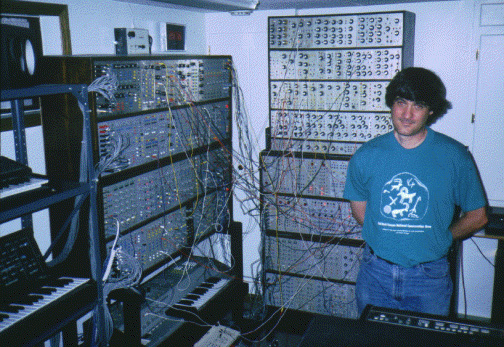Joseph Paradiso joined the research staff of the Media Laboratory in 1994 to explore novel
applications of sensor technologies for opening new channels of computer-user interaction.
During this period, he has designed many new interface devices based on electric field
sensing, magnetics, acoustics, radar, and optics; these have included wireless violin bow
trackers (used in performance by violinist Ani Kavafian), the body-sensing "Spirit Chair"
(used in performance by the magician duo Penn & Teller), gesture-sensing frames (for
collaboration with the Artist formerly known as Prince), interactive piezoelectric balloons,
musical radars, and scanning electric-field sensor arrays. As Technology Director for
Things That Think, he will identify and pursue new areas of technical development for
injection into TTT devices and projects. He also directs the design of sensor and interface
hardware for the Brain Opera in collaboration with composer and Media Lab Professor Tod
Machover.
Paradiso received a B.S. in electrical engineering and physics summa cum
laude from Tufts University in 1977, and in 1981 completed a Ph.D. in physics from MIT
as a C.T. Compton Fellow in the Nobel Prize-winning group headed by Samuel C.C.
Ting at the Laboratory for Nuclear Science. His dissertation research was based on an experiment measuring high-energy muon
pair production at the European Center for Nuclear Research (CERN) in Geneva,
Switzerland. From 1981 to 1984 he conducted post-doctoral research at the Swiss Federal
Institute of Technology (ETH) in Zurich, where he developed precision drift chambers and
fast electronics for the inner tracker of the L3 experiment at CERN/LEP. From 1984-1994
he was a physicist at the Draper Laboratory in Cambridge, Massachusetts, where, as a
member of the NASA Systems and Advanced Sensors and Signal Processing Directorates,
his research encompassed control algorithms for orbital and re-entry spacecraft, sonar
systems for advanced underwater applications, fractal-based image processing, and high-
energy physics detectors. From 1992-1994, he directed the development of precision
alignment sensors for the GEM muon detector at the Superconducting Supercollider, and
was a visiting scientist at ETH-Zurich in 1991 and 1992 to design fast pattern-recognition
algorithms for triggering an electromagnetic crystal calorimeter at the CERN Large Hadron
Collider.
In addition to his physics career, Paradiso has been designing electronic music synthesizers and composing electronic music since 1975, and long been active in the avant-
garde music scene as a producer of electronic music programs for non-commercial radio.
He has built (and still uses) one of the world's largest modular synthesizers, and has
designed MIDI systems for internationally-known musicians such as Pat Metheney and
Lyle Mays. He was a visiting scientist at the Media Lab in 1993, where he collaborated in
research and initial implementations of electric field sensing. Paradiso has published and
internationally lectured in many areas, including high-energy physics, spacecraft control,
sensor systems, and electronic music.
|
